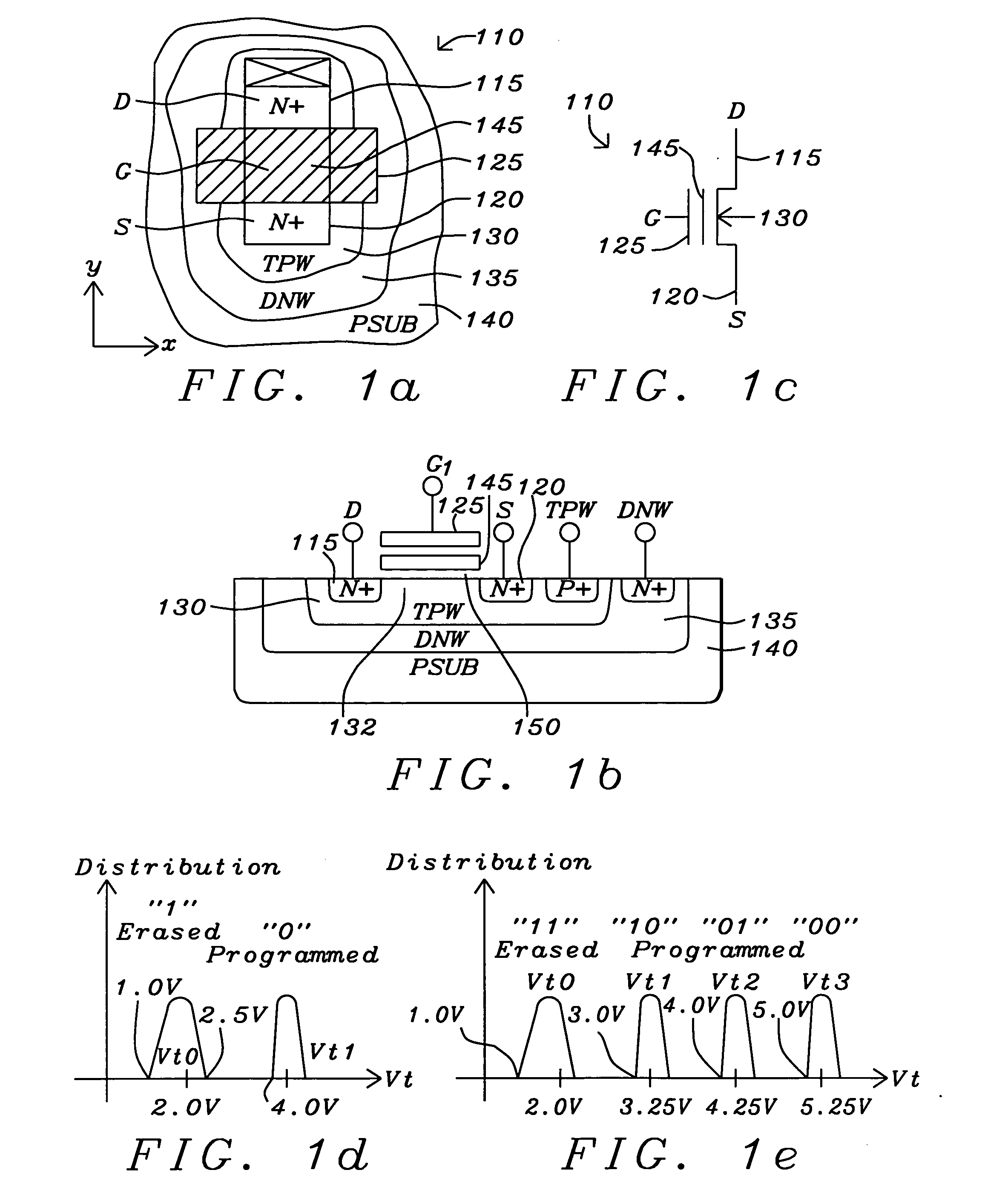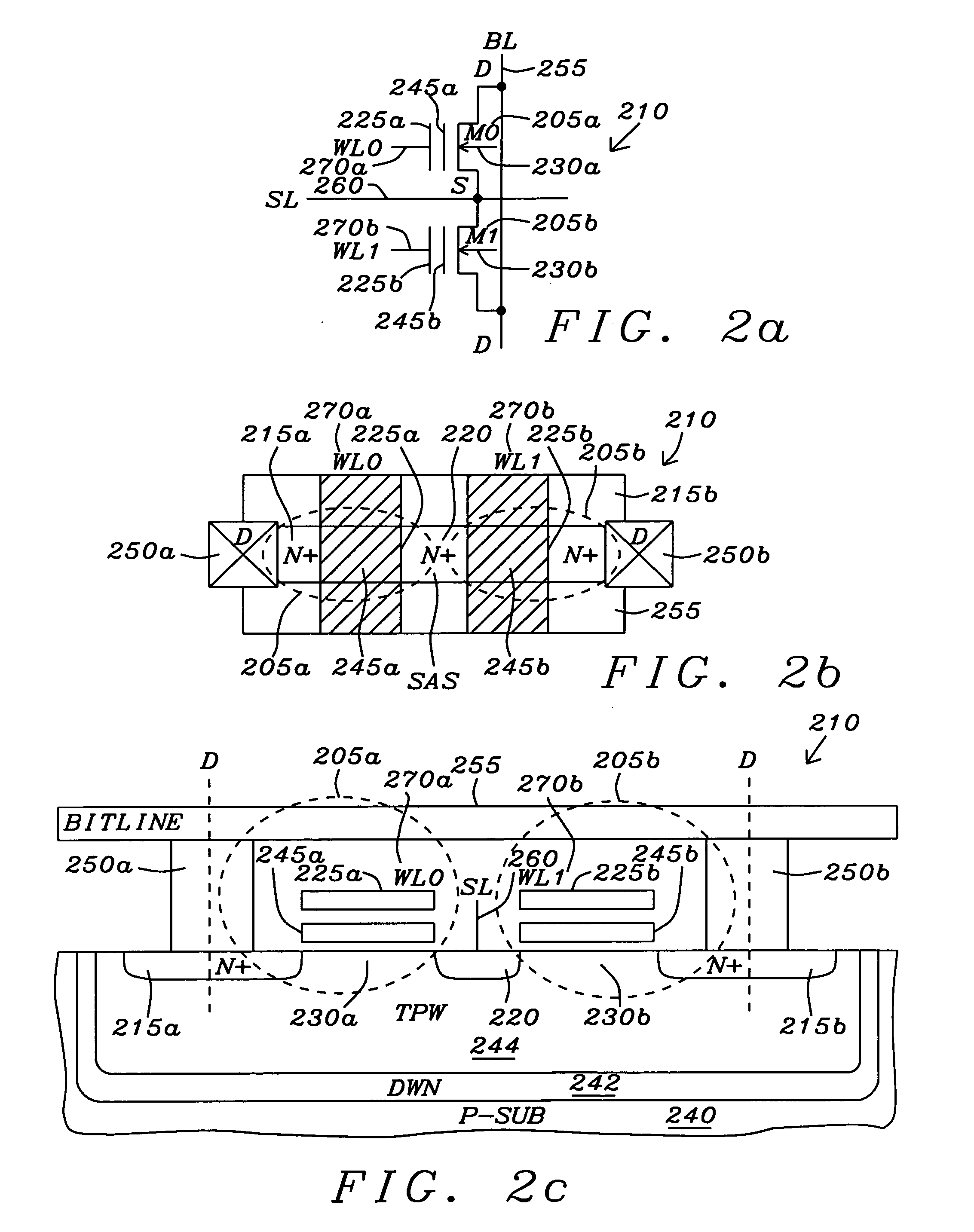Apparatus and method for inhibiting excess leakage current in unselected nonvolatile memory cells in an array
a non-volatile memory and array technology, applied in static storage, digital storage, instruments, etc., can solve the problems of increasing the number of its required external pins, bit line leakage current creating more of a problem, and the possibility of a read error or false read, so as to reduce the sub-threshold total leakage current
- Summary
- Abstract
- Description
- Claims
- Application Information
AI Technical Summary
Benefits of technology
Problems solved by technology
Method used
Image
Examples
Embodiment Construction
[0075]FIG. 1a is a top plan view of a NMOS NOR flash floating-gate transistor 110. FIG. 1b is a cross sectional view NMOS NOR flash floating-gate transistors 110FIG. 1c is the schematic symbol NMOS NOR flash floating-gate transistors 110. The floating-gate type NMOS NOR flash cell 110 is formed in the top surface of a triple P-type substrate 130. An N-type material is diffused into the surface of the P-type substrate 140 to form a deep N-well 135. A P-type material is then diffused into the surface of the deep N-well 135 to form a P-well 130 (commonly referred to as a triple P-well). The N-type material is then diffused into the surface of a P-type well 130 to form the drain (D) 115 and the self-aligned source (S) 120. A first polycrystalline silicon layer is formed above the bulk region of the P-type well 130 between the drain region 115 and the source region 120 to form the floating gate 145. A second polycrystalline silicon layer is formed over the floating gate 145 to create a c...
PUM
 Login to View More
Login to View More Abstract
Description
Claims
Application Information
 Login to View More
Login to View More - R&D
- Intellectual Property
- Life Sciences
- Materials
- Tech Scout
- Unparalleled Data Quality
- Higher Quality Content
- 60% Fewer Hallucinations
Browse by: Latest US Patents, China's latest patents, Technical Efficacy Thesaurus, Application Domain, Technology Topic, Popular Technical Reports.
© 2025 PatSnap. All rights reserved.Legal|Privacy policy|Modern Slavery Act Transparency Statement|Sitemap|About US| Contact US: help@patsnap.com



